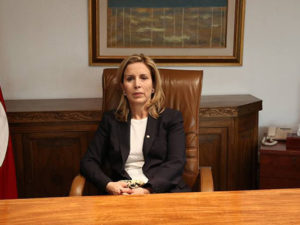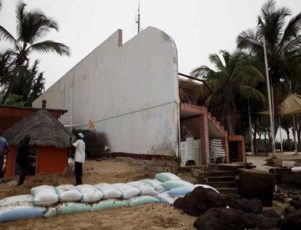The number of tourist visits to North Africa drops eight percent while sub-Saharan Africa sees a one percent decline.
International tourist arrivals in Africa declined by three percent in 2015 but experts predict a revival this year.
The overall decline of arrivals on the continent was fueled by a drop of eight percent in North Africa, which accounts for about one third of all arrivals, according to the United Nations World Tourism Organization (WTO).
In sub-Saharan Africa, the decline for the year was only one percent and travel began to increase in the second half of the year.
The tourism organization said there were a total of 53 million tourist arrivals on the continent in 2015.
Global travel increased
The decline contrasts with other regions of the world that saw increases in international arrivals, including Europe, Asia and the Americas, which each rose by five percent, and the Middle East, which saw a gain of three percent after experiencing declines for years prior to 2014.
The drop in travel to Africa ended more than a decade of increases in tourist travel to the continent.
WTO Secretary-General Taleb Rifai predicted the number of arrivals this year will increase by two to five percent, driven by a rise in tourism. He said experts expect tourism to more than double to about 130 million arrivals per year by 2030.
One reason for optimism is that more visitors are coming from emerging economies in Asia and in Central and Eastern Europe. At the same time, fewer travelers are coming from China as its economy struggles.
Continent offers diverse attractions
Popular African attractions include the wildlife of Masai Mara in Kenya, Victoria Falls in Zimbabwe and Zambia, the pyramids of Egypt, Cape Town in South Africa, Marrakech in Morocco, the Omo River region of Ethiopia, the gorillas of the Virunga Mountains in Uganda, Rwanda and the Democtratic Republic of Congo, and Mount Kilimanjaro in Tanzania.
According to the African Development Bank, Morocco, Egypt, South Africa, Tunisia and Zimbabwe were the African countries with the most international visitors in 2014. It predicted that Algeria, Mozambique and Kenya soon would join the ranks of the most visited nations.
The report (pdf) estimated that there were a total of 65 million international arrivals in 2014. About half came from Europe, a total of 582 million travelers. Another 24 percent come from the Asia-Pacific region (263 million); 11 percent from North America (120 million). Smaller percentages come from Latin America, Africa and the Middle East.
In Egypt, 1.3 million tourism jobs
Egypt has the most direct employment in tourism at 1.3 million jobs, followed by Ethiopia with 980 million, Nigeria with 884 million, Morocco with 775 million and South Africa with 680 million.
The countries with the largest share of employment devoted directly to tourism are: Seychelles (24 percent), Cabo Verde (14 percent), Mauritius (11 percent), and Morocco and Tunisia (7 percent each).
The World Travel and Tourism Council estimates that travel and tourism and travel represents more than 8 percent of the gross domestic product of Africa and contributed about three percent of employment in hotels, airlines and other passenger transportation, as well as travel agents, restaurants and leisure industries.
Tiny share of global market
Africa holds a small share of the global market. Africa had 65.3 million arrivals in 2014, just fewer than 6 percent of the 1.1 billion tourist arrivals reported worldwide, the tourism monitor report said. Africa received a total of $43.6 billion in tourism revenue, about 3.5 percent of the global total.
While tourism in Africa was rising steadily until 2015, myriad challenges including lack of high airline prices, convenient transport, security concerns, threats to wildlife and lack of cooperation between nations, may be holding it back from even greater growth.
In North Africa, terror and civil strife sharply reduced the flow of tourists, while violence and the Ebola crisis scared many tourists away from the southern continent.
Security fears undermine tourism
Among major destinations, Kenya, Nigeria, Tunisia and Egypt have seen their tourism industries battered by security fears.
South Africa, Nigeria, Ghana and Uganda also saw significant drops in travel, according to one estimate.
The tiny West African country Mali has seen its tourist business collapse amid ongoing terrorist attacks and anti-government unrest.
From a peak of 200,000 visitors a year in 2011, Mali’s tourist trade has slowed to a trickle of a few thousands as numerous governments, including the United States, Britain, France and Australia, have issued travel warnings.
High number of travel warnings
Travel warnings can be a deterrent to tourism and Africa has seen a large share issued by the U.S. State Department. A 2015 analysis by Skift of 261 travel alerts issued or updated since 1996, found that 30 of 82 countries that had notifications were in Africa.
Algeria, Burundi and Congo, along with Afghanistan, had the most frequent updates.
Meanwhile, the African Union’s commissioner for transport and infrastructure recently urged representatives of African nations to adopt a more collaborative approach to increasing tourism to the continent.
“We can complement each other as African countries. We should work together to develop our institutional capacity and human resources to take it on the international level. So this is one of the areas we need to work on,” Elham Mahmoud Ahmed Ibrahim said.



 “SCM started with less than 20 employees; now it is one of the most popular companies in Tunisia,” the 59 year old said of her father’s enterprise.
“SCM started with less than 20 employees; now it is one of the most popular companies in Tunisia,” the 59 year old said of her father’s enterprise.
